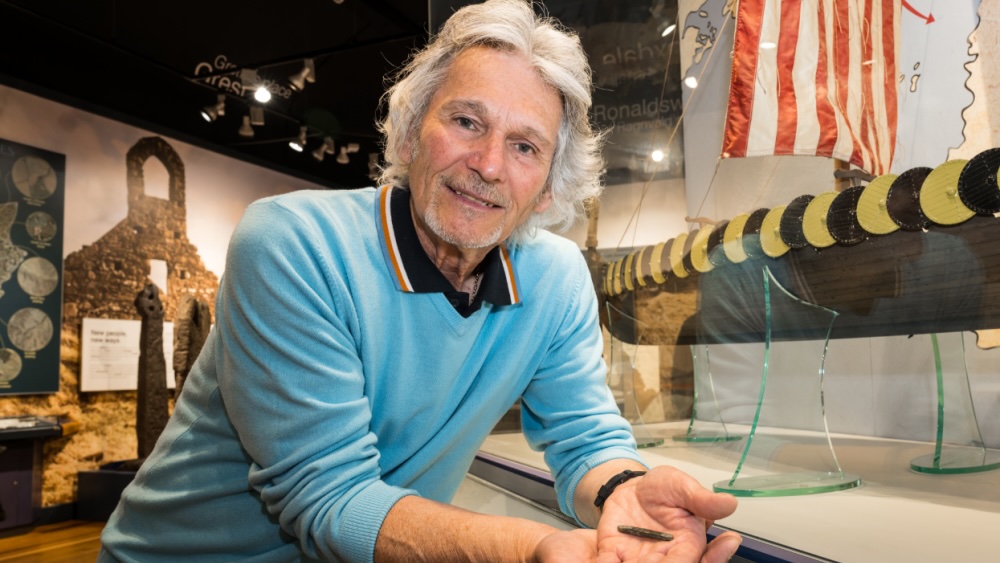
A metal detectorist has uncovered a Viking Age silver ingot on the Isle of Man.
John Smart discovered the 1,000-year-old, finger-sized sliver of metal while exploring the island, which sits in the Irish Sea between Northern Ireland and England, according to a statement from Manx National Heritage.
Smart, who has been a metal detectorist for more than 40 years, said he never tires of the thrill of searching for buried treasure on the island.
"It's the thought of finding something of interest ... you're detecting over a land with nothing, it's soundless, then suddenly there's a little beep," Smart told the Isle of Man's Manx Radio.
Per the island's Treasure Act 2017, Smart relinquished the artifact to Manx National Heritage, which handed it over to the island's Coroner of Inquests.
Related: Viking sword with 'very rare' inscription discovered on family farm in Norway
The Coroner of Inquests declared the piece of metal, which weighs approximately 0.4 ounce (11 grams), a "treasure." This determination was based on a silver analysis using X-ray fluorescence, which reveals chemical signatures, and a scanning electron microscope, which also gives chemical composition information. The analysis was conducted by the University of Liverpool and Manx National Heritage.
The results determined that the ingot was 88% silver, according to the statement. (Any artifact that contains at least 10% precious metal and has no traceable owner is considered a treasure, according to the act.)
Ingots were common currency for Vikings and served as a substitute for silver coins to pay for goods and services.
"Ingots like this were used in the Viking world for trade," Allison Fox, curator of archaeology for Manx National Heritage, said in the statement. "The ingots were weighed and tested to make sure of their silver content and they were used in part or in whole to buy whatever a Viking needed. It was a cross-border currency."
This isn't the first time that silver from the Viking Age (A.D. 793 to 1066) has been discovered on the Isle of Man. In 2021, an amateur treasure hunter unearthed a "piggy bank" hoard containing numerous artifacts, including 87 coins and 13 pieces of cut-up silver arm rings, which served as "hack silver," or currency that could be broken into different sizes.
"This ingot may only be a small artifact, but put into context, it helps illustrate how the Isle of Man was a part of the international Viking trade network 1,000 years ago including how the Viking economy operated and where on the island trade was taking place," Fox told Manx Radio. "I often compare it to a credit card, essentially. Because the value is in its silver content ... they could spend that anywhere in the Viking world."
The ingot is now on display in the Viking and Medieval Gallery at the Manx Museum, according to the statement.







